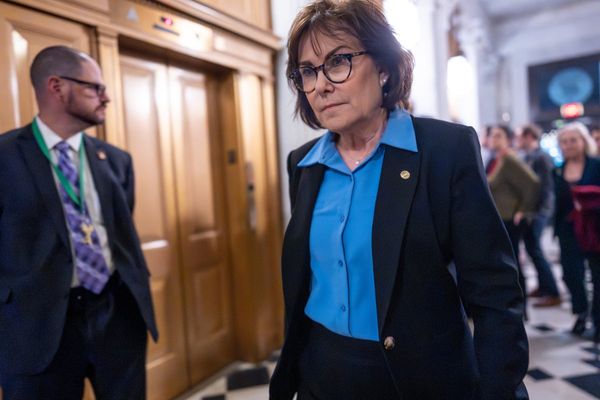Anger over Delhi’s toxic air triggered street protests again this week as residents gathered at the iconic Jantar Mantar observatory, accusing authorities of ignoring a crisis they argued had pushed the city into a state of physical and emotional exhaustion.
Dozens of people, many wearing oxygen masks and carrying gas cylinders to symbolise the city’s dystopian environment, held up placards demanding the right to breathe safe air.
Several said they felt this winter had become unbearable, with weeks of hazardous air leaving children and older people struggling to cope.
“I’ve been living in Delhi for the past four decades; this is the worst year I’ve seen,” Bhawna, who, like many of her fellow protesters, wouldn’t give her full name, said.
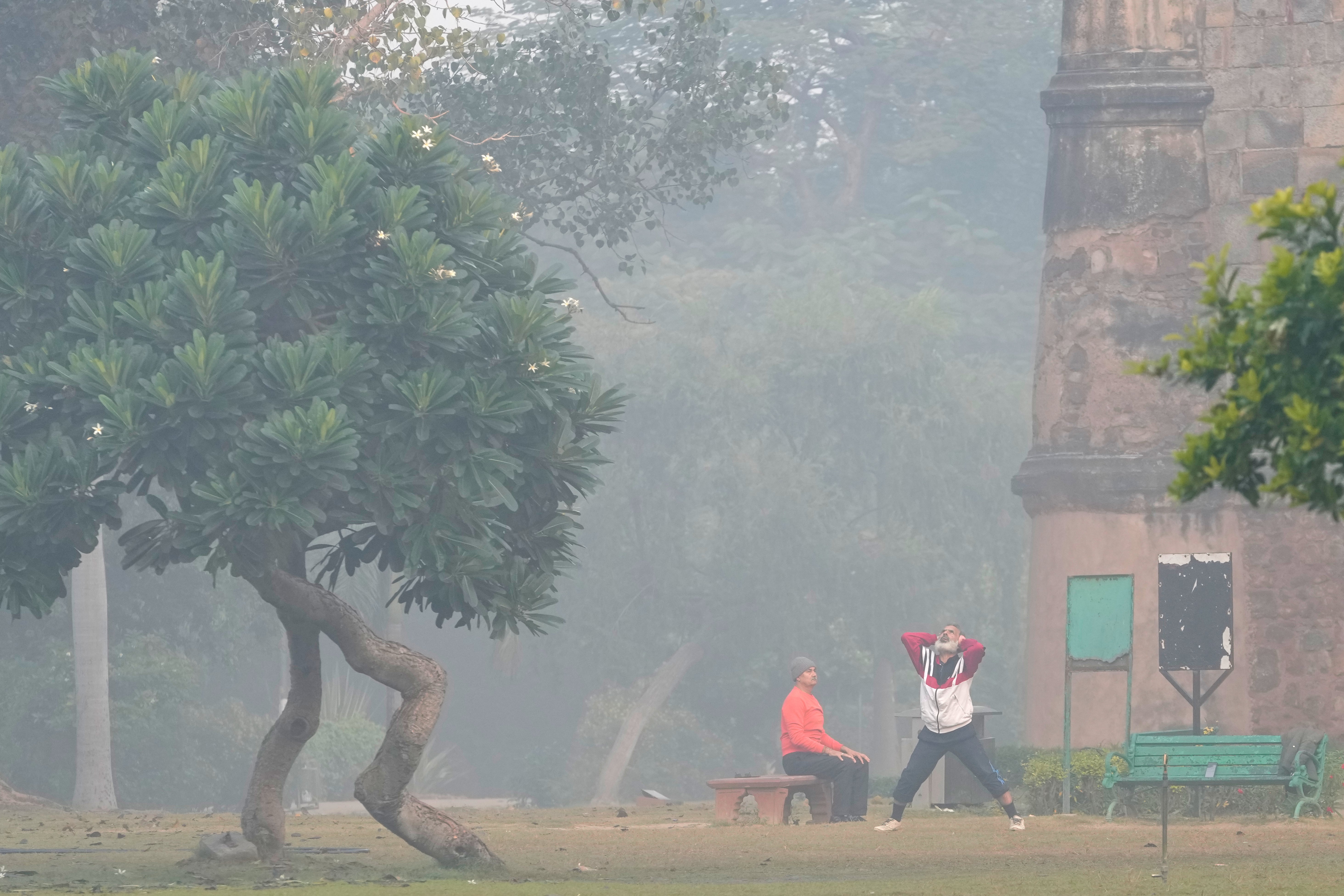
The demonstration, the latest in a series of protests over air pollution just this month, reflected a growing frustration among people who said appeals for urgent action had gone unanswered for years.
Bhavreen Kandhari, the founder of the collective Warrior Moms, said people were out because “something that’s being said again and again every year is not translating into any action”.
“Every family, I think, has a case where a child is sick or an elder is sick, or you’re suffering,” she said. “Sometimes you can’t even read those messages, they are so upsetting”.
Ms Kandhari said pregnant women were having anxiety attacks during high-pollution nights. “You cannot take away clean air,” she said, “it is costing us a huge amount of distress.”
Delhi’s air quality index reading breached 400 again on Thursday, a level deemed “severe”, as a persistent toxic haze shrouded the city due to slow winds and falling temperatures.

Doctors are raising the alarm over the health impacts of the pollution. “Environmental pollution will affect every organ of the body,” Dr Anant Mohan, head of pulmonary medicine at the All India Institute of Medical Sciences, told reporters on Thursday.
“It can affect any age, even before birth, right up to the end of life.”
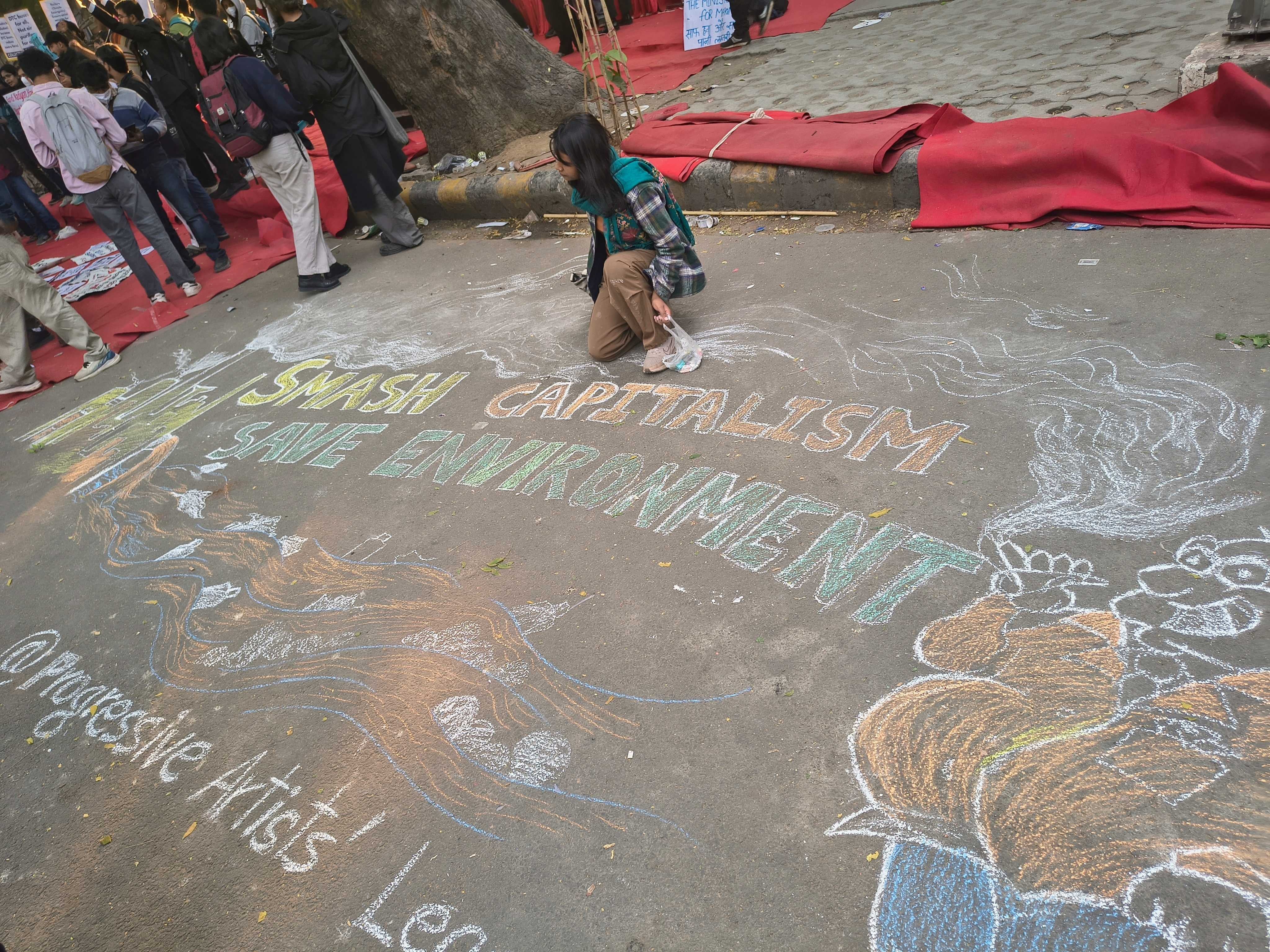
Doctors who joined the protest on Tuesday said the situation in the city was so bad that they did not recommend anyone visit.
“Living in Delhi at this time of the year will take away years from your life, that is a fact, it’s not contested,” said Dr Tilotama.
Journalist and activist Saurav Das, who filed a series of right-to-information requests this week seeking disclosures from government agencies, said many who joined the demonstration felt their health was at direct risk. “Every breath you take, it’s taking you a step forward towards cancer,” he said. “Children are being born with smokers’ lungs.”
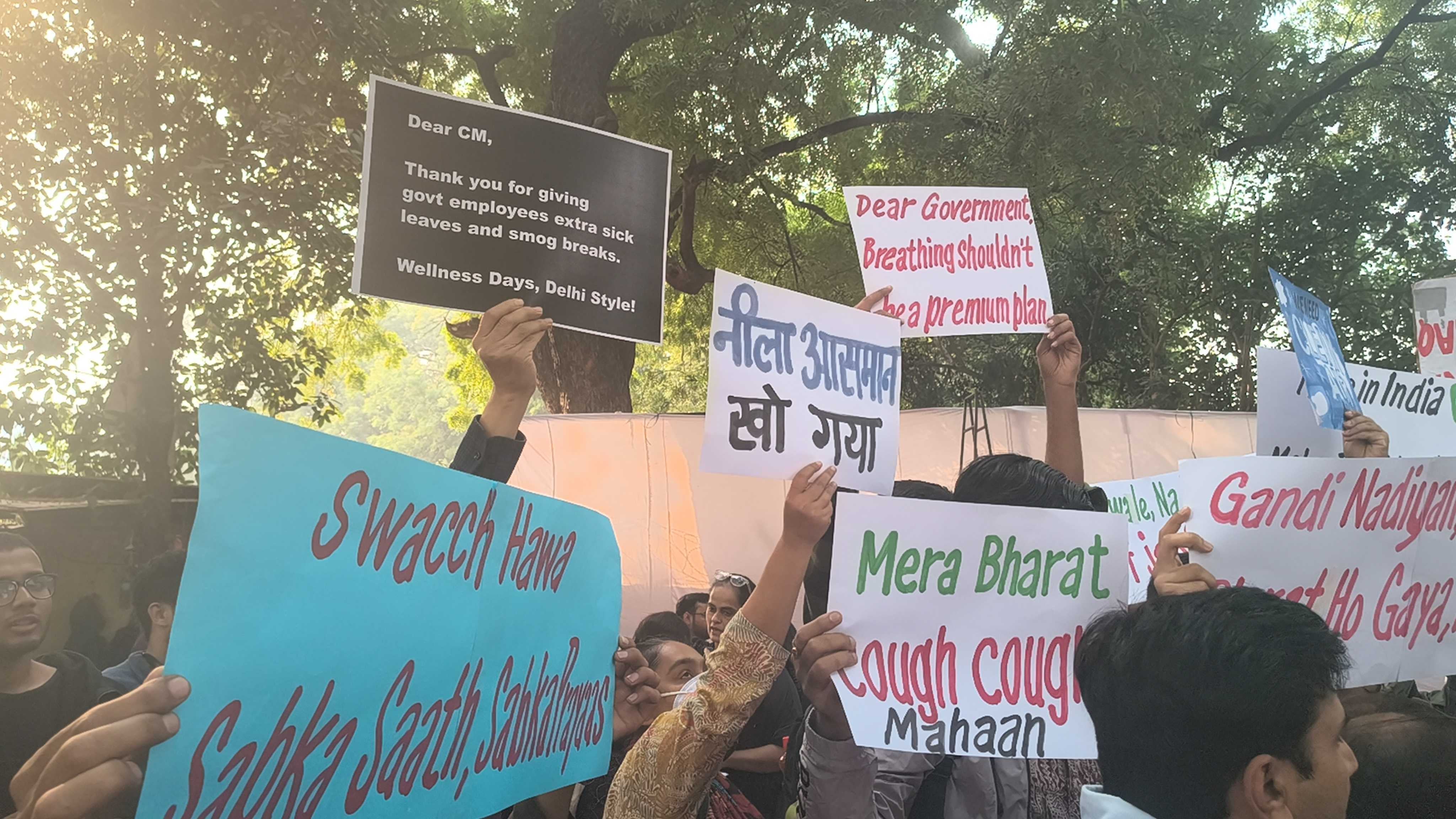
“It’s not getting any better, and it is affecting every single person every single second, so it is a direct threat to everybody’s life,” he added.
He said people were taking to the streets because “things have not improved”. “They have gotten worse in the last decade,” he argued. “Nobody seems to be on the ground. Nobody is doing anything about it, and people are here asking the authorities to wake up.”
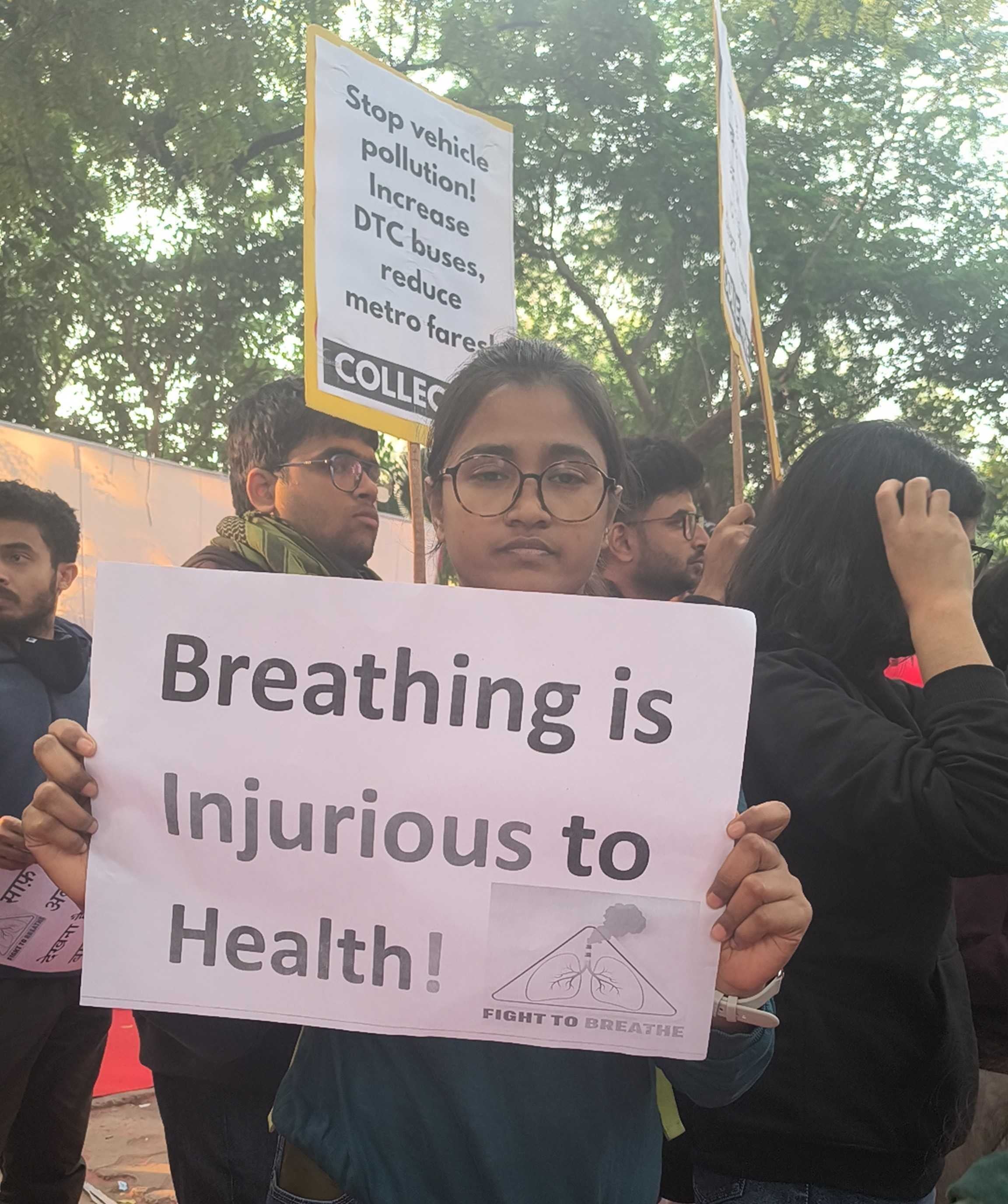
Vimlendu Jha, an environmentalist who said he was at the demonstration “as a father of a four-and-a-half-year-old girl”, expressed frustration at the “complete inaction by the government, by respective governments”.
He said the lack of transparent data and questions over poor monitoring of pollution levels was worsening public trust.
In recent days, the Delhi government has been accused of spraying water around the city’s air quality monitors to manipulate data.
“Most of the air quality monitors are shut down at the peak levels of pollution. We do not even know what sort of an emergency we are living in,” Mr Jha said. “It’s an air quality emergency. It is a public health emergency.”
He said the people out protesting were “mothers, children, grandparents who actually come here to speak up, and ask and plead and beg for cleaner air, for a better lung”.
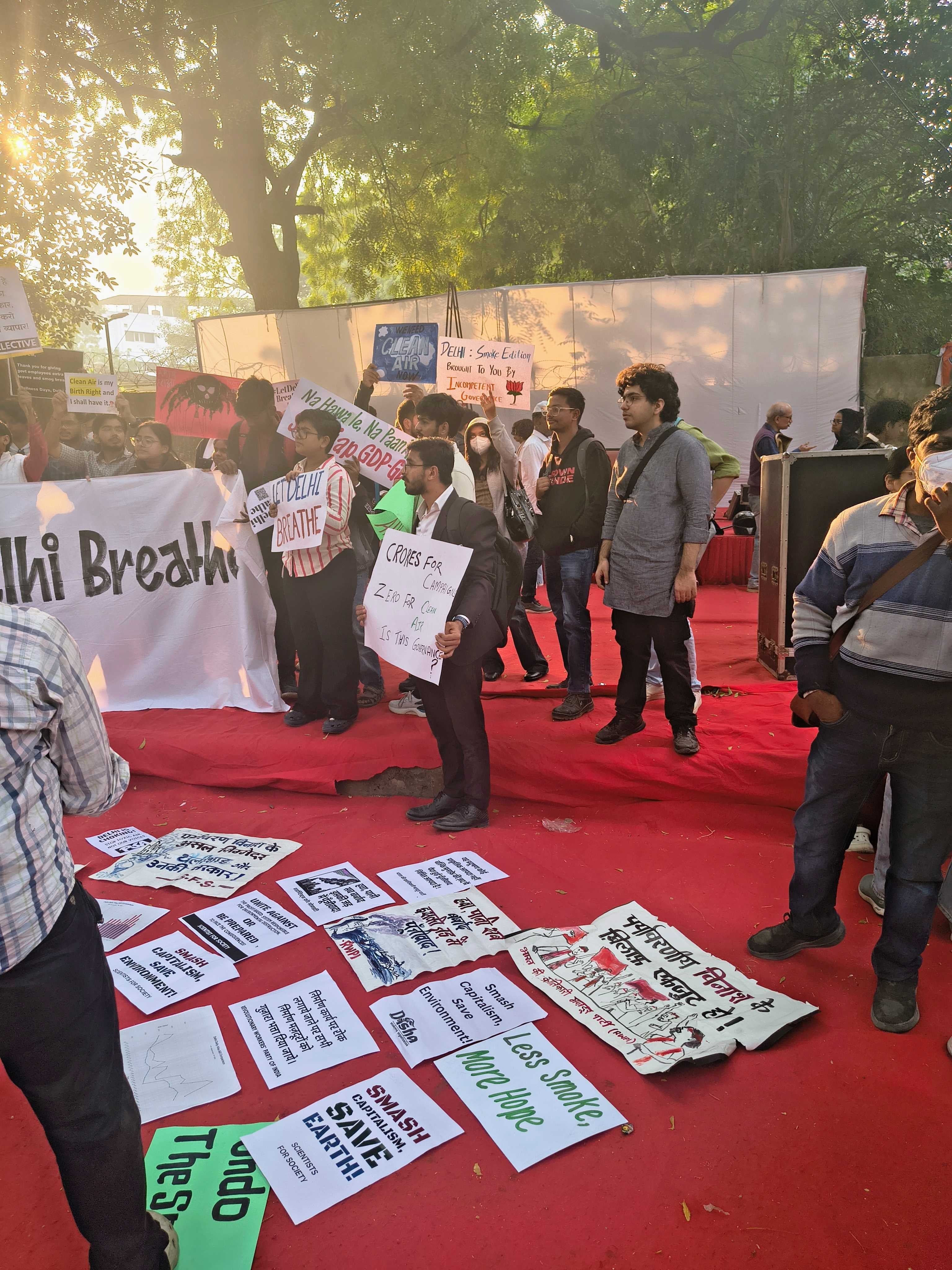
Amal, one of the protesters, said his family was directly affected. “The AQI in Delhi is very high and it affects children. It affects us. My mother has had asthma for the past 10 years. She didn’t have it before that,” he said.
“The more important thing is the government is doing nothing. They seem to be incapable of any coordinated response.”
The toxic haze, a recurring winter crisis, results from a mix of vehicular exhaust, industrial emissions, construction dust, smoke from crop residue burning in the neighbouring states, and stagnant weather patterns that trap pollutants close to the ground in Delhi.
The city, though, remains polluted throughout the year with vehicular and industrial emissions, unregulated waste and open construction activity contributing to bad air.
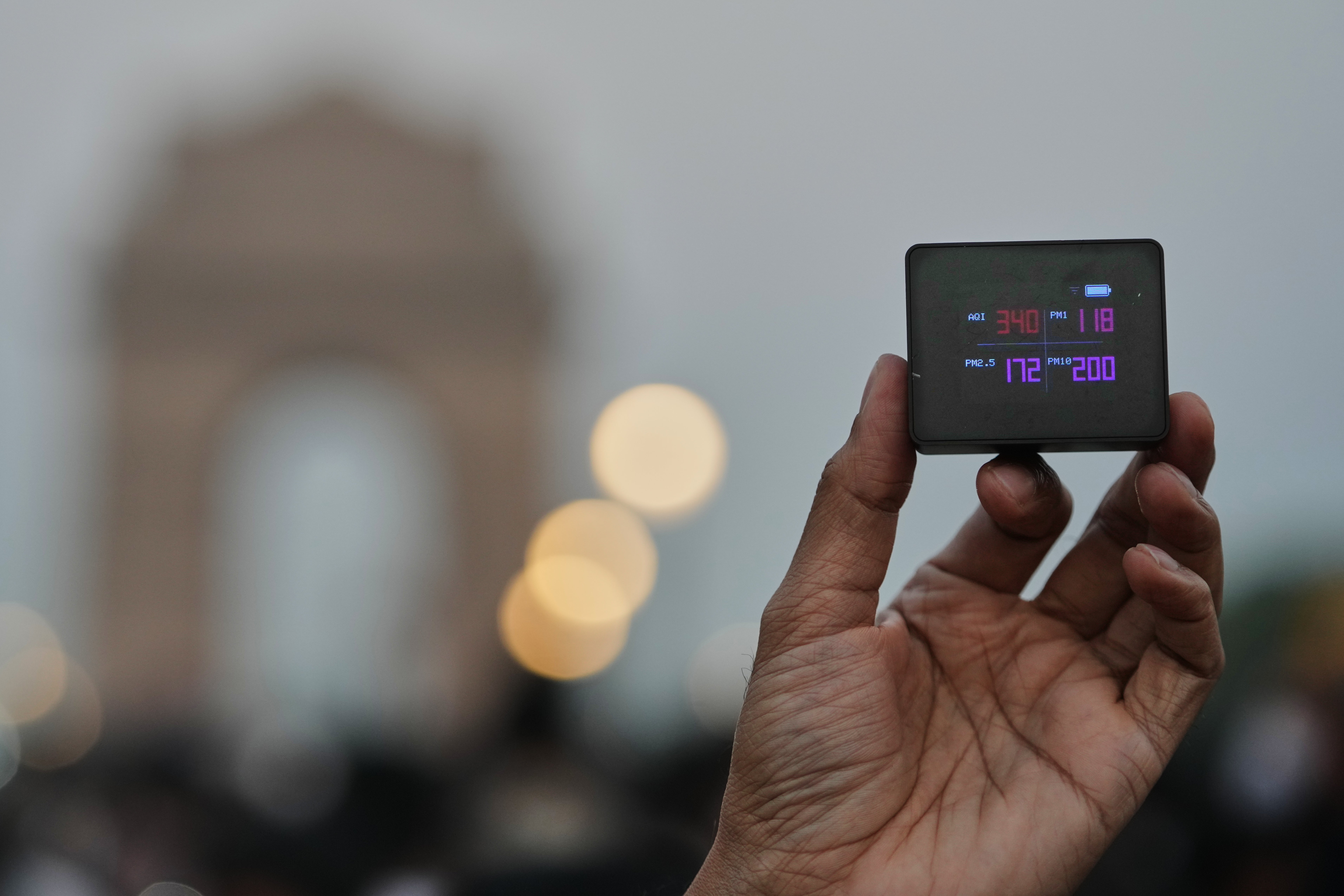
Some protesters expressed frustration over insufficient public transport. While Delhi has a metro train system, the lack of buses and walkable paths often forces people to choose cars over public transport.
“Unless you improve public transport, nothing will happen,” Amal said. He added that “the number of cars in Delhi is more than the sum of vehicles in Chennai, Mumbai and Kolkata”, describing it as the result of years of policy failure.
This latest demonstration followed a larger protest near India Gate earlier this month, where some participants were detained by police. The protesters said that they would continue gathering despite restrictions because they believed the crisis had reached a tipping point.
“People have finally realised and woken up,” Das said. He believed the demonstrations would continue until the government felt compelled to move from what the protesters described as years of fragmented responses to a coordinated plan.
Angry protesters carrying oxygen cylinders demand answers over ‘toxic’ Delhi air
British doctors arrested for setting foot in India ‘out of curiosity’
Indian police arrest suspected owner of car used in Delhi blast
Nine killed as explosives linked to Delhi blast blow up at Kashmir police station
Bangladesh demands India hand over Hasina after death sentence
45 Indian pilgrims die in bus-tanker crash near Saudi Arabia’s Medina, police say
